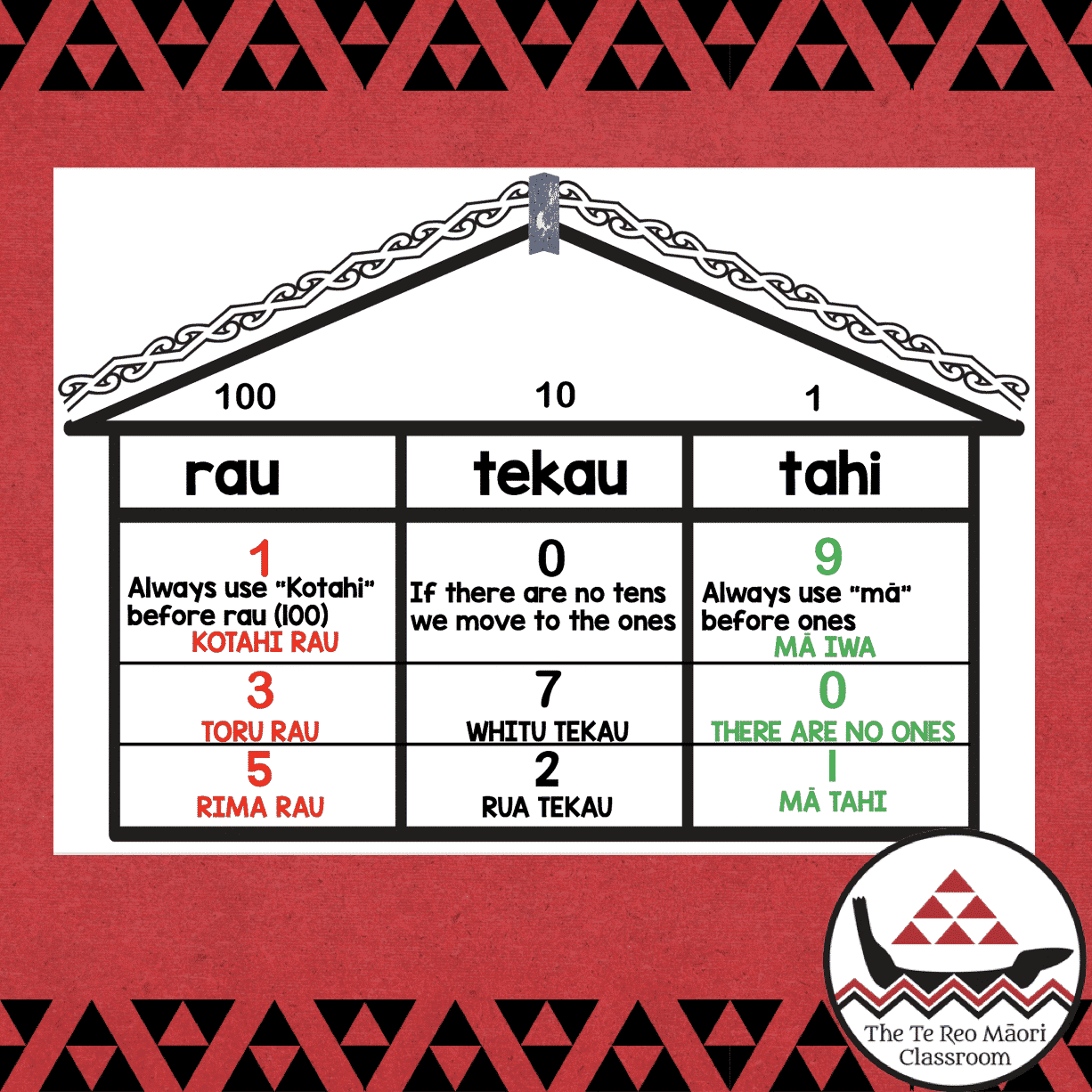Counting from 1 to 10 is one of the earliest lessons we teach our learners. It helps them count the objects they see, the food they eat, and all other things that take their interest. Eventually, they learn how to count numbers with 2 digits. With this, they can count items in greater numbers. Next comes counting beyond 100.

Learning how to count is definitely an indispensable skill. As the alphabet is to language, so are the numbers to mathematics. Maths, number and counting is all formula just like language is. Therefore, there are only a few things you need to remember so that you and your learners can say the Māori numbers beyond 100.
Counting from 0-9
When counting the Māori numbers from 0-9
kore [0],
tahi [1],
rua [2],
toru [3],
whā [4],
rima [5],
ono [6],
whitu[7],
waru [8],
and iwa [9].
If you want free resources for your learners to practice this check out these counting mats.
The Tens
The tens are formed by putting the number of tens before the word for ten (tekau), except for ten itself:
tekau [10],
rua tekau [20], (2 lots of ten)
toru tekau [30], (3 lots of ten)
whā tekau [40],
rima tekau [50],
ono tekau [60],
whitu tekau [70],
waru tekau [80],
and iwa tekau [90].
Compound Māori Numbers
Ones are added with mā for “and”.
tekau mā rua [12], 10 and 2
whā tekau mā toru [43]). 40 and 3
“Mā” only comes between the tens and ones.
The Hundreds
The hundreds are formed by putting the number of hundreds before the number for a hundred,(rau):
kotahi rau [100],
rua rau[200],
toru rau [300],
whā rau (400)
rima rau (500)
ono rau (600)
whitu rau (700)
waru rau (800)
iwa rau (900)
Kotahi
The word for “one” before hundred, thousand, million etc is “Kotahi”.
Hundreds Tens and Ones
With all of the above in mind, counting the Māori numbers beyond 100 is a fairly straightforward process.
124 will be Kotahi rau, rua tekau MĀ whā.
901 will be Iwa rau, mā tahi. (There are NO TENS)
101 will be Kotahi rau mā tahi. (There are no tens)
111 will be Kotahi rau tekau mā tahi.
The word for thousand is “mano”.
1000-kotahi mano.
He Whakawhitinga Kōrero:
Kōrerotia mai tō tau mati-toru. Say your three digit number to me.
He aha te tau tekau te rahinga ake i tēnei? What number is ten greater than this?
He aha te tau tekau te itinga ake? What number is ten less?
E hia ngā tekau kei roto i tēnei tau? How many tens are in this number?
E hia ngā rau kei roto i tēnei tau? How many hundreds are in this number?
This resource: Counting 100-1000
Other number resources:
Te Reo Māori Number Recognition Bundle (5 Resources)
Te Reo Number Recognition-Maths at Home
Nevertheless, it takes practice to become familiar and to be used to counting Māori numbers. Everyday is a chance to use them as learners see a lot of objects which they count in te reo. All we have to do is be intentional in teaching and practicing counting in Māori. In no time, te reo Māori will be the new normal, even down to things as basic as counting.
(Ko tēnā te tūmanako-that’s the hope 🙂

